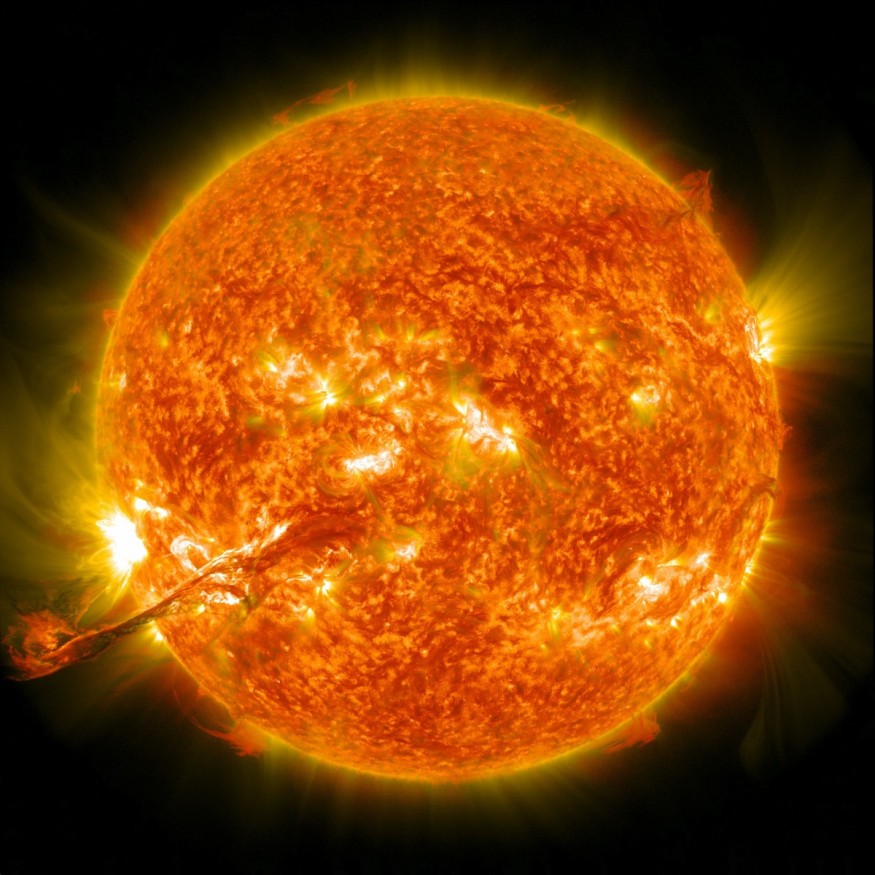An enormous solar flare messed up the reaction to Hurricane Ian, and given that a sizable active sunspot has just entered Earth's field of vision, there could be more.

Interfering with Rescue Operations
The devastating impact of Hurricane Ian on Florida and the Carolinas may have been compounded on Sunday, Oct. 2, when a significant solar flare interfered with radio connections, according to Space.com.
On Sunday, around 3:53 p.m., a strong X1 solar flare-the mildest variation of the strongest category of flares-erupted from the sun.
EDT and reached its peak roughly 30 minutes later (1953 GMT).
Since solar flares move at the speed of light, the immediate radio blackout on the planet's sun-facing side might last up to an hour.
According to SpaceWeatherWatch, the whole U.S. was included in the impacted area.
Solar Flares

According to the U.S., the radio blackout was a Strong R3 category from the National Oceanic and Atmospheric Administration (NOAA) and undoubtedly impacted rescue personnel utilizing 25 MHz radios to communicate in regions where Hurricane Ian's wrath destroyed mobile phone networks.
As per space weather researcher Tamitha Skov on Twitter, the disruption in the upper atmosphere generated by the flare may also have rendered GPS tracking inoperative or less precise.
A few hours later, a lesser flare caused another radio blackout over Australia and the western Pacific, according to SpaceWeatherWatch.
Both flares were accompanied by coronal mass ejections (CMEs), which are bursts of magnetized particles from the sun's upper atmosphere, the corona.
They were both generated by sunspots (darkened regions of intense magnetic activity on the sun's surface) called AR3110 in the northwestern region of the visible disk.
Following a few previous CMEs that erupted from the sun on Saturday, the two plasma clouds may now be traveling toward Earth (Oct. 1).
In addition, a coronal hole in the sun's atmosphere is presently directing a stronger-than-usual solar wind-a continuousmass stream of charged particles-toward (an opening in the sun's magnetic field).
Together, the CMEs raised the possibility that Earth may experience a significant geomagnetic storm in the coming days.
According to NOAA's forecast on Tuesday (Oct. 4), the world might experience a moderate (G2) geomagnetic storm that could slightly impact high-latitude power grids and low-earth orbit satellites.
Active Solar Cycle
In the upcoming days, additional flares and CMEs are predicted by space weather scientists.
According to the U.K., a brand-new, sizable, and "complex" sunspot named AR3112 has appeared in the northeast and will move across the sun's visible disk during the following two weeks.
AR3112, which spans 80,000 miles, is "one of the greatest sunspots in years," according to SpaceWeather.com (130,000 kilometers).
According to the Met Office, AR3112 might become more active, increasing the chance of flares and CMEs.
The vast region in the northeast and the region in the northwest are expected to produce flares, according to the Met Office's forecast of moderate to high solar activity.
For more cosmic news, don't forget to follow Nature World News!
© 2026 NatureWorldNews.com All rights reserved. Do not reproduce without permission.





